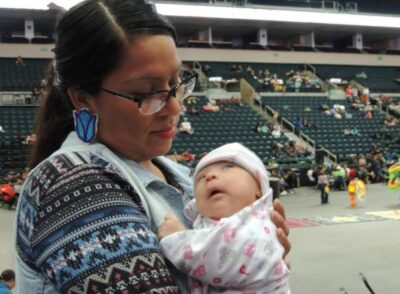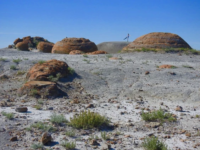Manito Ahbee: Manitoba powwow, one of North America’s largest, celebrates 20 years
By Canadian Press on May 17, 2025.

WINNIPEG — For many familiar with Canada’s powwow scene, Maggie White is known as the first lady of the jingle dress.
The late Anishinaabe woman earned the title after popularizing the jingle dress regalia and dance style at powwows in the late 1960s to the early 1980s.
In the years since, the dance, known as a healing dance, has become an official category at powwows.
White’s family is honouring the matriarch and the jingle dress at this year’s 20th anniversary of the Manito Ahbee Festival in Winnipeg, one of the largest powwows in North America.
Jocelyn White says it’s hard to put into words what it means to pay tribute to the legacy of her grandmother.
“I (am) excited. I (am) happy that we’re able to do this at such a big venue to honour our kokum,” she said from her home on the Naotkamegwanning First Nation in northwestern Ontario.
At the powwow festival, the family is set to host a jingle dress special called “Honouring the Shiibaashka’igan,” which translates to jingle dress in Anishinaabemowin. A special is a separate contest during a powwow usually sponsored by an individual, family member or organization.
There are different oral histories of the origins of the jingle dress dating back to the early 20th century.
Maggie White’s story stems from when she became ill as a young girl. Her grandfather dreamed of a special dress for her adorned with shiny metal cones. When she wore it and danced, it helped cure her ailments.
Attending Manito Ahbee has been a longtime White family tradition, and Jocelyn White has been going since it started in downtown Winnipeg.
She has watched her nieces dance and listened as men in her family performed with the Whitefish Bay Singers, a drum group founded by her father and an uncle.
“I was always so proud … when you hear the music, it gives you a good feeling,” she said.
It’s this pride of culture, family and traditions that prompted organizers to start Manito Ahbee two decades ago.
A group of Indigenous people in Winnipeg, including the festival’s current executive director, Lisa Meeches, came together to develop the festival after discussing the need for an event to showcase First Nations, Métis and Inuit cultures that could also be an inclusive place for all.
Derek Hart has been involved with the three-day festival since day one, as the owner of a company that oversees security. He has also taken on roles with the event’s education and logistics teams.
“I remember that first year. It was a bit of a concern because nobody had bought tickets ahead of time. But once the festival got going and the powwow … it was a good turnout,” Hart said.
“It was just a really proud moment to see the festival start.”
Manito Ahbee has also evolved. It used to line up with the Aboriginal People’s Choice Music Awards, now known as the Indigenous Music Awards, before it moved to the summer. It now takes place on the May long weekend.
There have also been different venues and, in recent years, it has settled at Red River Exhibition Park at the edge of the city.
Programming changed as feedback came in from attendees. This year’s event includes a teepee-raising contest, a fashion show and speeches from youth leaders. There’s also a marketplace with food and retail vendors.
One of the festival’s mainstays has been the crowning of Miss Manito Ahbee.
The title was created to honour the memory of missing and murdered Indigenous women and girls and is awarded to a girl each year.
Grace Redhead, who has been with the festival for the past 12 years, got her start with the Miss Manito Ahbee ambassador program.
“The crowning of Miss Manito Ahbee is really emotional to see,” said Redhead.
Contestants go through a rigorous adjudication process, demonstrating leadership skills and knowledge about the missing and murdered. Former ambassadors have gone on to become authors, educators and musicians.
Redhead’s current role as powwow manager has her organizing the festival’s main attraction — the powwow, which draws hundreds of dancers each year.
There’s typically “chaos,” she said, while making sure everyone is in their positions for the kickoff, also known as the grand entry.
“It’s a really nice moment once everything’s going and you see all the hard work come together,” said Redhead.
Running a festival of this size is no easy feat. It requires the help of managers and volunteers, many of them newcomers looking to learn more about the First Peoples of this land.
The festival has made it a priority to work with immigrant and newcomer organizations. On Sunday, it’s holding a citizenship ceremony for the first time.
“There’s so many people that come, and it’s not just Indigenous people. It’s people of different nationalities just coming to participate,” said Hart.
As the festival heads into its next 20 years, Hart and Redhead say they’re most excited to pass on the torch to the next generation of organizers.
“I have no worries about the next 20 years,” said Redhead.
This report by The Canadian Press was first published May 17, 2025.
Brittany Hobson, The Canadian Press
38-37





I’m making over $13k a month working part time. I kept hearing other people tell me how much money they can make online so I decided to look into it. Well, it was all true and has totally changed my life. This is where I started…………….
.
.
More Details For Us →→→→→ https://tinyurl.com/Googlework6